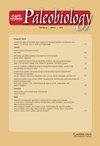将耗散系统的普里高津观点应用于进化中的主要转变
IF 2.7
2区 地球科学
Q2 BIODIVERSITY CONSERVATION
引用次数: 3
摘要
摘要伊利亚·普里戈金的三项概念,他认为,适用于许多复杂的耗散系统,从物理学到生物学,甚至社会系统。对于Prigogine来说,这个三项式——函数、结构、波动——旨在捕捉这些系统中上层和下层之间丰富的反馈关系。他的观点的主要新颖之处在于他对因果关系的看法,其中因果箭头从耗散结构向下延伸到其组成部分或功能。根据这一见解,一些物理学家和生物物理学家开始将以前主要用于生物学的术语,如进化、适应、学习和类生命行为,应用于物理和化学非平衡系统。相反,在这里,我们将Prigogine的观点应用于生物学,特别是进化,尤其是进化中的主要转变(MTE),认为至少层次转变——个性的转变——遵循三项式所预期的轨迹。在这一轨迹中,以前的自由生活生物体在一个更大的有机“结构”中转变为“功能”。Prigogine的观点还预测,与现有数据一致,生物体中等级数量的增加应该会随着时间的推移而加速。最后,它预测,在地质时间尺度上,生态系统,尤其是盖亚,将倾向于“去达尔文主义”或“机械化”其组成生物。本文章由计算机程序翻译,如有差异,请以英文原文为准。
Applying the Prigogine view of dissipative systems to the major transitions in evolution
Abstract. Ilya Prigogine's trinomial concept is, he argued, applicable to many complex dissipative systems, from physics to biology and even to social systems. For Prigogine, this trinomial—functions, structure, fluctuations—was intended to capture the feedback-rich relations between upper and lower levels in these systems. The main novelty of his vision was his view of causation, in which the causal arrow runs downward from dissipative structures to their components or functions. Following this insight, some physicists and biophysicists are beginning to apply terms formerly used mainly in biology, such as evolution, adaptation, learning, and life-like behavior, to physical and chemical nonequilibrium systems. Here, instead, we apply Prigogine's view to biology, in particular to evolution, and especially the major transitions in evolution (MTE), arguing that at least the hierarchical transitions—the transitions in individuality—follow a trajectory anticipated by the trinomial. In this trajectory, formerly free-living organisms are transformed into “functions” within a larger organic “structure.” The Prigogine view also predicts that, consistent with available data, the increase in number of hierarchical levels in organisms should accelerate over time. Finally, it predicts that, on geological timescales, ecosystems and Gaia in particular will tend to “de-Darwinize” or “machinify” their component organisms.
求助全文
通过发布文献求助,成功后即可免费获取论文全文。
去求助
来源期刊

Paleobiology
地学-古生物学
CiteScore
5.30
自引率
3.70%
发文量
38
审稿时长
>12 weeks
期刊介绍:
Paleobiology publishes original contributions of any length (but normally 10-50 manuscript pages) dealing with any aspect of biological paleontology. Emphasis is placed on biological or paleobiological processes and patterns, including macroevolution, extinction, diversification, speciation, functional morphology, bio-geography, phylogeny, paleoecology, molecular paleontology, taphonomy, natural selection and patterns of variation, abundance, and distribution in space and time, among others. Taxonomic papers are welcome if they have significant and broad applications. Papers concerning research on recent organisms and systems are appropriate if they are of particular interest to paleontologists. Papers should typically interest readers from more than one specialty. Proposals for symposium volumes should be discussed in advance with the editors.
 求助内容:
求助内容: 应助结果提醒方式:
应助结果提醒方式:


